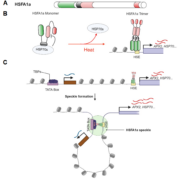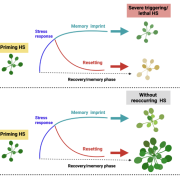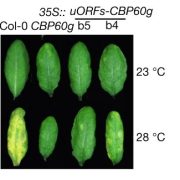Cracking the code of rice grain quality under heat stress
 Rice is one of the most important food crops globally, providing more than 20% of the world’s calorie intake and over 75% for the population in Asia. Therefore, apart from yield, grain quality is another critical agronomic trait for breeding and improvement, especially under stressful environmental conditions. By comparing the two major rice subspecies, Indica and Japonica, which exhibit differential responses to heat stress (Indica is more thermotolerant), Li and colleagues identified a molecular “switch” – QT12 – that regulates grain chalkiness, a well-established indicator of grain development and quality. Through comprehensive molecular and biochemical analyses, the researchers found that grain quailty thermosensitivity occurs when QT12 expression increases at higher temperatures. In varities with thermotolerant grain quality, QT12 expression does not increase with increasing heat, and this heat-sensitive expression is associated with Nuclear Factor Y (NF-Y) proteins. QT12 modulates the balance of storage protein and starch content during grain filling, ultimately affecting overall grain quality. Interestingly, although located on different chromosomes, QT12 and NF-Ys have been co-selected during evolution. Distinct trait regulatory haplotypes (TRHs) are identified in heat-tolerant and heat-sensitive varieties, offering valuable tools for marker-assisted breeding. (Summary by Ching Chan @ntnuchanlab) Cell 10.1016/j.cell.2025.04.011
Rice is one of the most important food crops globally, providing more than 20% of the world’s calorie intake and over 75% for the population in Asia. Therefore, apart from yield, grain quality is another critical agronomic trait for breeding and improvement, especially under stressful environmental conditions. By comparing the two major rice subspecies, Indica and Japonica, which exhibit differential responses to heat stress (Indica is more thermotolerant), Li and colleagues identified a molecular “switch” – QT12 – that regulates grain chalkiness, a well-established indicator of grain development and quality. Through comprehensive molecular and biochemical analyses, the researchers found that grain quailty thermosensitivity occurs when QT12 expression increases at higher temperatures. In varities with thermotolerant grain quality, QT12 expression does not increase with increasing heat, and this heat-sensitive expression is associated with Nuclear Factor Y (NF-Y) proteins. QT12 modulates the balance of storage protein and starch content during grain filling, ultimately affecting overall grain quality. Interestingly, although located on different chromosomes, QT12 and NF-Ys have been co-selected during evolution. Distinct trait regulatory haplotypes (TRHs) are identified in heat-tolerant and heat-sensitive varieties, offering valuable tools for marker-assisted breeding. (Summary by Ching Chan @ntnuchanlab) Cell 10.1016/j.cell.2025.04.011








